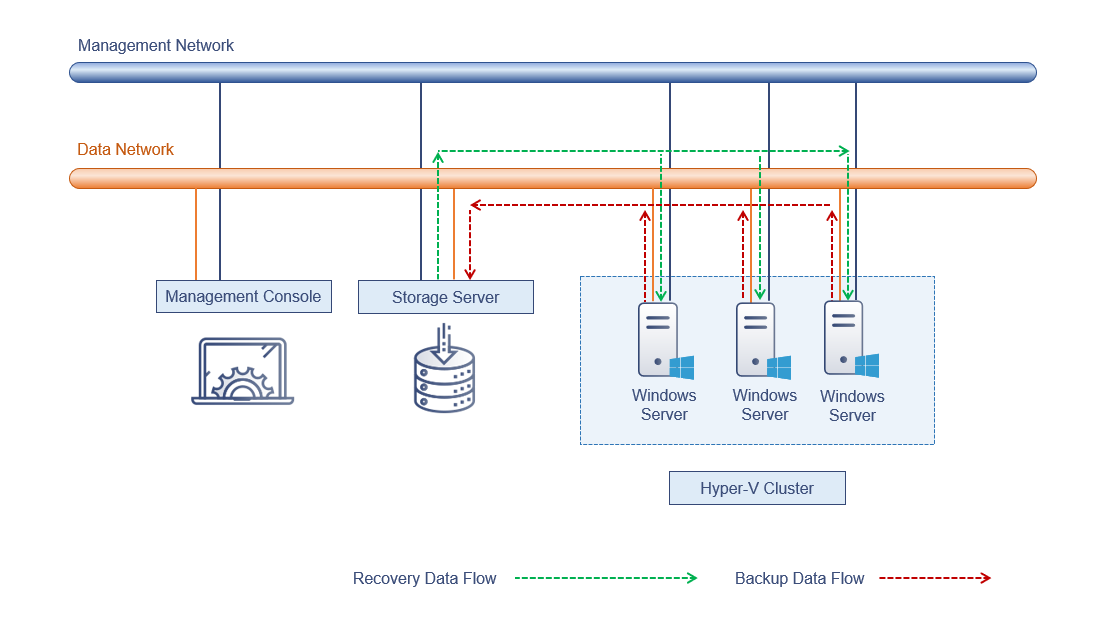Updated at: 2022-12-09 03:49:50
To ensure successful backup and recovery, you need to plan the network among management console, storage server, client, and Hyper-V virtualization platform.
As the network planning varies in different scenarios, this section takes the scenario of separation of management network and data network as an example.

Deployment: Hyper-V virtualization platform is comprised of a single or multiple Windows Server host(s). The VMs (virtual machines) need to be backed up by the agent installed on the Hyper-V node where the VM resides, that is, the VMs on that node cannot be backed up if that agent is not installed. Access the management console and all Hyper-V nodes to the management network, and the management console, storage server and all Hyper-V nodes to the data network.
Backup Data Flow: Data flows from Hyper-V virtualization platform to storage server via data network during backup.
Recovery Data Flow: Data flows from storage server to Hyper-V virtualization platform via data network during recovery.
Separate deployment of management network and data network can mitigate the pressure of network bandwidth. While, it requires to configure at least two networks and the configuration process is more complex.
As the network planning varies in different scenarios, this section takes the scenario of separation of management network and data network as an example.

Deployment: Hyper-V virtualization platform is comprised of a single or multiple Windows Server host(s). The VMs (virtual machines) need to be backed up by the agent installed on the Hyper-V node where the VM resides, that is, the VMs on that node cannot be backed up if that agent is not installed. Access the management console and all Hyper-V nodes to the management network, and the management console, storage server and all Hyper-V nodes to the data network.
Backup Data Flow: Data flows from Hyper-V virtualization platform to storage server via data network during backup.
Recovery Data Flow: Data flows from storage server to Hyper-V virtualization platform via data network during recovery.
Separate deployment of management network and data network can mitigate the pressure of network bandwidth. While, it requires to configure at least two networks and the configuration process is more complex.
< Previous:
Next: >

















